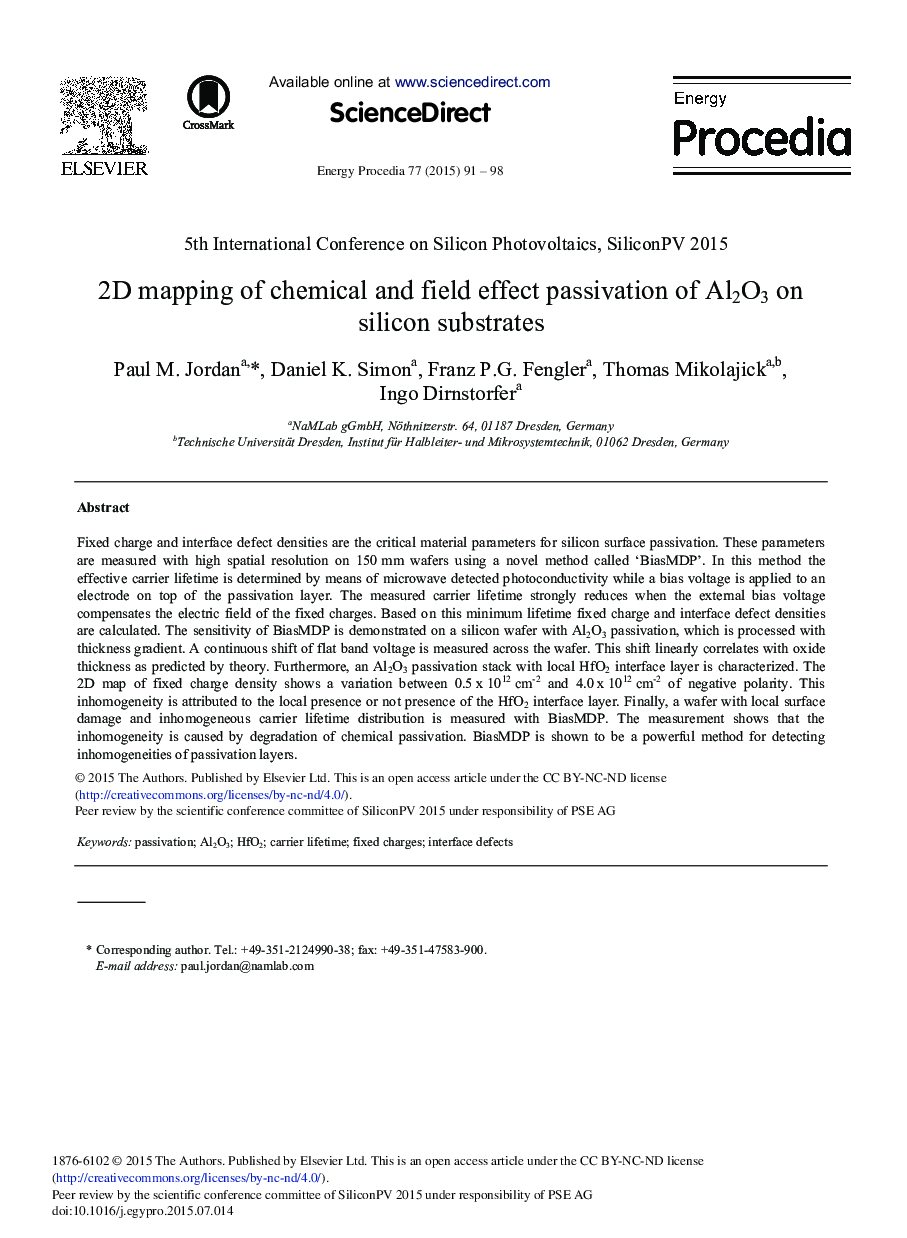| Article ID | Journal | Published Year | Pages | File Type |
|---|---|---|---|---|
| 1509341 | Energy Procedia | 2015 | 8 Pages |
Fixed charge and interface defect densities are the critical material parameters for silicon surface passivation. These parameters are measured with high spatial resolution on 150 mm wafers using a novel method called ‘BiasMDP’. In this method the effective carrier lifetime is determined by means of microwave detected photoconductivity while a bias voltage is applied to an electrode on top of the passivation layer. The measured carrier lifetime strongly reduces when the external bias voltage compensates the electric field of the fixed charges. Based on this minimum lifetime fixed charge and interface defect densities are calculated. The sensitivity of BiasMDP is demonstrated on a silicon wafer with Al2O3 passivation, which is processed with thickness gradient. A continuous shift of flat band voltage is measured across the wafer. This shift linearly correlates with oxide thickness as predicted by theory. Furthermore, an Al2O3 passivation stack with local HfO2 interface layer is characterized. The 2D map of fixed charge density shows a variation between 0.5 x 1012 cm-2 and 4.0 x 1012 cm-2 of negative polarity. This inhomogeneity is attributed to the local presence or not presence of the HfO2 interface layer. Finally, a wafer with local surface damage and inhomogeneous carrier lifetime distribution is measured with BiasMDP. The measurement shows that the inhomogeneity is caused by degradation of chemical passivation. BiasMDP is shown to be a powerful method for detecting inhomogeneities of passivation layers.
